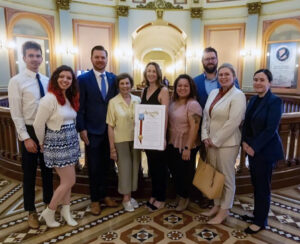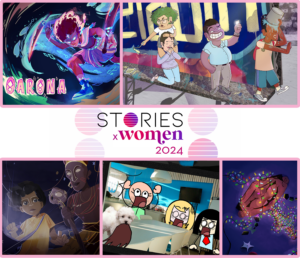Boy it’s a tough time for some of us in the animation community. Many people have been unemployed for a long time, causing them to consider leaving the industry that they love. Companies are consolidating, which always means more layoffs, uncertainty and unemployment. Small companies that depend on work-for-hire are shrinking or going under due to fewer and fewer projects being picked up. Some believe that the animation industry has imploded on itself.
If you were around in the 90s, this all looks very familiar. At that time, it was called the “dot com bubble” which burst in a similar fashion. While the “invest quickly, expand even faster to a certain point, and when growth is no longer sustainable, hope that you’re one of the winners when reality hits” pattern is a business practice commonly associated with the tech industry, it seems that the animation industry isn’t immune.
I’m not an MBA, and perhaps this is an effective way to build businesses or make money, but I do know that the human cost in this equation is devastating. So much promise and hope is quickly dashed and destroyed. People, especially those entering the field, are given opportunities that would have taken years to happen in the past. These folks are paid notably higher than the industry-standard to do jobs that they have little experience in, causing extraordinary stress and horrible work-life balance. And then when the course correction comes (as it always does), the rug is pulled out from under them…they are left on their own, unemployed and wondering what the hell just happened.
I don’t believe it’s the end of the animation industry. I think the industry is evolving. There are still children who want to be entertained and parents who need them to be entertained. Researchers have found that the #1 form of entertainment for Gen Z (the treasured demographic of 18-34 year-olds) is animation. Anime is exploding in popularity to the point where it overshadows the metrics of all the other forms of entertainment and is leading the way for an explosion of adult, genre animation like Invincible, Arcane, Scavenger’s Reign and Blue Eye-Samurai.
How people get their entertainment is evolving as well. Gen Z and younger folks are not watching big screens as much. Their preferred sources of content are YouTube and TikTok. This opens the door for independent creators who are savvy with using social media to build an audience or community around their stories. Look at Hazbin Hotel or The Amazing Digital Circus. Their respective audience numbers are in the millions and revenue is being generated through ancillary endeavors like merchandise.
I actually think animation, in all its forms, is the future of entertainment. Linear animation as in series, features and VFX as well as interactive animation, aka games, is still what grabs us, thrills us and inspires us.
Around the world there are new animation industries developing because of the potential to create jobs, tell stories, and celebrate cultures. The challenge is going to be to build these industries without too much dependence on Hollywood (the concept, not the geographical location). Local funding and distribution that can sustain the industry will be key. Places like Japan and India have thrived because their content is completely supported within their own boundaries. They are not subjected to the ups & downs of the international entertainment industry.
Maybe that’s how we all need to respond to the current evolutionary phase. We have to stop relying on the mainstream industry to sustain employment and serve as the be-all-end-all of mass entertainment. We need to create our content for and with our communities. This will, of course, require that you be part of or build a community. Essentially you need financing, distribution and marketing to make content. If you think about it, there are tools available to everyone to do all those things. If you’re a creator, find a social media wizard and then find a money genius. Start thinking about how you and those around you can make this work.
Every time we face a challenge — which have been many over the last 10-12 years — the solution always seems to be community. As our industry evolves and morphs or even crashes, the one thing that we will always have is each other. I’m as much an introvert and loner as the next person, but I know that it is critical for my survival that when things get rough, I need to connect with other humans. We are lucky to work in a unique industry in which the community is genuinely kind and supportive. Without getting too political, in the US, the system in which we live is based on individualism, success and wealth, not communal survival. It’s designed in a way that a few will win while leaving most to fend for themselves. It’s up to us, those on our own, to take care of each other, to chart our own success and survival.
Building and supporting community is at the core of WIA. All our programs were created to bring people together, foster a mentoring culture, and give exposure to under-represented talent. Our mission is gender justice, which is only achievable in a strong and supportive community. As everything continues to change, we have the opportunity and responsibility to build new, more equitable systems; To do things differently and create the industry we want, not the one we inherited.
The WIA World Summit happened on Monday at the Annecy International Animation Festival.
WATCH A VIDEO OF ALL THE PANELS HERE
You will get new insights from your colleagues about the state of the global industry and what various solutions people have come up with. We hope the Summit videos will inspire you with hope, motivate you to continue the good fight, and enrich you with a foundational sense of belonging to a community that has a bright future.






